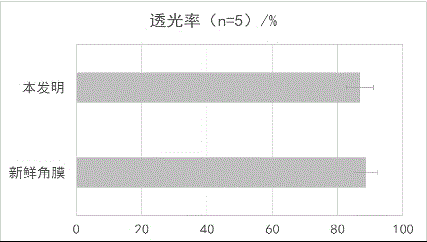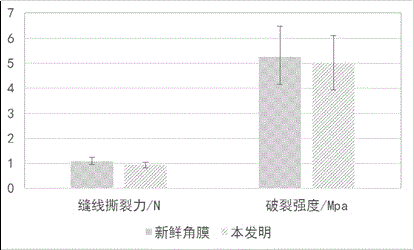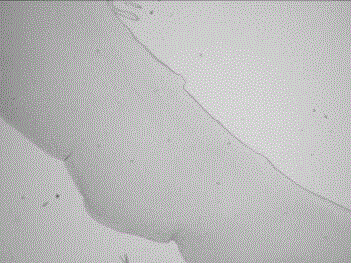Aseptic processing preparation method for allogeneic corneal grafts
A corneal graft and xenogeneic technology, applied in the field of tissue engineering biomedical materials, can solve the problems of corneal stroma transparency, mechanical strength and degradation performance, physical virus inactivation method does not meet, denaturation and other problems, so as to avoid terminal sterilization process, inhibit the growth of bacteria, and reduce production costs
- Summary
- Abstract
- Description
- Claims
- Application Information
AI Technical Summary
Problems solved by technology
Method used
Image
Examples
Embodiment 1
[0044] Example 1: Preparation of porcine corneal xenograft
[0045] 1) UV irradiation
[0046] Place 100 sterile pig eyeballs obtained in a clean workbench with the eye surface facing up on a 316L sterile steel pan. The distance between the steel pan and a 254nm ultraviolet lamp (50w) is 30cm. Turn on the ultraviolet lamp and irradiate for 2 hours.
[0047] 2) Soak in sodium hypochlorite solution
[0048] Move the eyeballs irradiated by ultraviolet light into 10 times the sodium hypochlorite solution with a concentration of 0.1g / l, and soak at room temperature for 1 hour. Then use 20 times the amount of purified water to shake and wash at 100 rpm for 10 times, each time for 10 minutes, to obtain completely virus-inactivated eyeballs.
[0049] 3) Remove the epithelial layer
[0050] The eyeball has been fully swollen after vibratory cleaning with purified water in the previous step. Move the swollen eyeball into a sterile clean steel plate in the ultra-clean workbench, and w...
Embodiment 2
[0058] Example 2: Preparation of Donkey Corneal Xenografts
[0059] 1) UV irradiation
[0060] Put 100 sterile donkey eyeballs obtained in a clean bench with the eye surface facing up and place them on a 316L sterile steel pan. The distance between the steel pan and a 254nm ultraviolet lamp (50w) was 30cm. Turn on the ultraviolet lamp and irradiate for 4 hours.
[0061] 2) Soak in sodium hypochlorite solution
[0062] Move the eyeballs irradiated by ultraviolet rays into 15 times the sodium hypochlorite solution with a concentration of 1g / l, and soak them at room temperature for 20 minutes. Then use 30 times the amount of purified water to shake and wash 10 times at a speed of 120 rpm, each time for 10 minutes, to obtain completely virus-inactivated eyeballs.
[0063] 3) Remove the epithelial layer
[0064] The eyeball has been fully swollen after vibratory cleaning with purified water in the previous step. Move the swollen eyeball into a sterile clean steel plate in the ul...
PUM
| Property | Measurement | Unit |
|---|---|---|
| Thickness | aaaaa | aaaaa |
| Area | aaaaa | aaaaa |
| Area | aaaaa | aaaaa |
Abstract
Description
Claims
Application Information
 Login to View More
Login to View More - R&D
- Intellectual Property
- Life Sciences
- Materials
- Tech Scout
- Unparalleled Data Quality
- Higher Quality Content
- 60% Fewer Hallucinations
Browse by: Latest US Patents, China's latest patents, Technical Efficacy Thesaurus, Application Domain, Technology Topic, Popular Technical Reports.
© 2025 PatSnap. All rights reserved.Legal|Privacy policy|Modern Slavery Act Transparency Statement|Sitemap|About US| Contact US: help@patsnap.com



